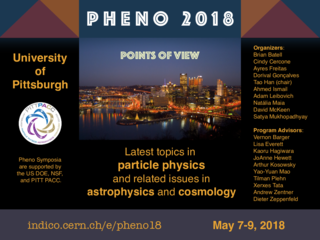Speakers
Description
Soft Collinear Effective Theory (SCET) has originally been developed in the framework of QCD. SCET for QCD facilitates calculation of scattering amplitudes for jets of highly collimated and energetic particles with soft radiations in a systematic and efficient way. A small parameter, $\lambda$, is used to describe the soft and collinear regions of the phase space. As a consequence the Lagrangian of SCET is an expansion in powers of $\lambda$. We have developed Soft Collinear Effective Theory for gravity at leading and next-to-leading powers in $\lambda$. Being an effective theory, SCET for gravity is halfway between full theory of gravity (below Planck scale) and gravity amplitudes. This reveals many interesting properties of gravity amplitudes which are obscure in full theory and usually need lengthy calculations or ingenious tricks to realize. For example, soft graviton theorem and absence of collinear IR divergences at the leading power are manifest in the Lagrangian of our effective theory.
A SCET for gravity that describes N different collinear directions, effectively has N copies of the diffeomorphism (diff) invariance of the full theory. This suggests that the original S-matrix, which contains all gravity SCETs with all values of N, should have an infinite number of effective diff invariances. It would be interesting to explore the connection between this and the infinite-dimensional symmetries of gravitational scattering amplitudes, known as BMS invariance in the literature. In the literature nonlocal “dressings” have been found by speculating what might be the fundamental observables in the ultimate theory of gravity, while in our gravity SCET we are led to specific forms of these dressings as a consequence of invariance under the N copies of diff. We call these dressings in analogy with QCD SCET, diff Wilson lines. As a future direction it is interesting to find relations between leading and next-to-leading power terms by using Reparametrization Transformation Invariance (RPI), that essentially restores Lorentz invariance “broken” by choosing a preferred direction for collinear particles. It is also possible that RPI should be changed when considering gravity.
Summary
Effective Field Theories

